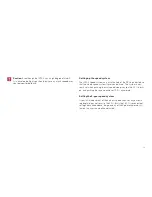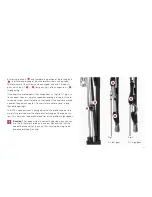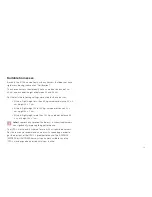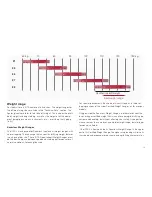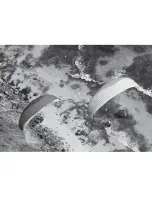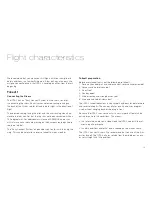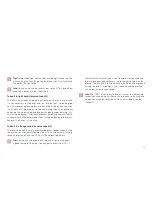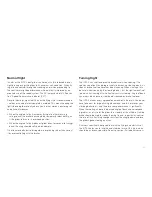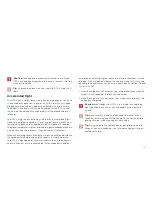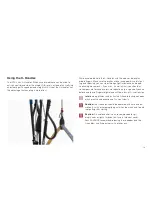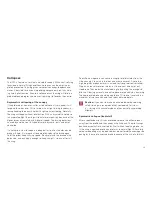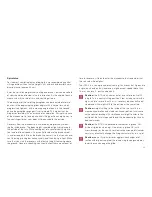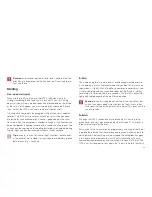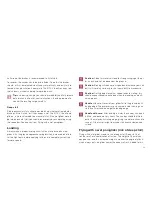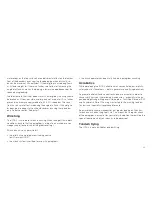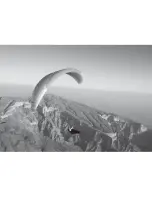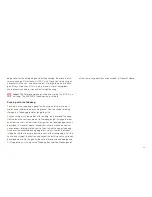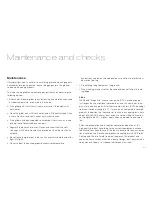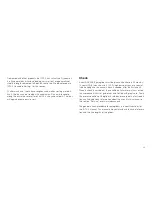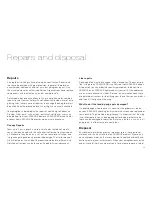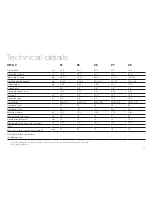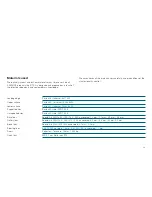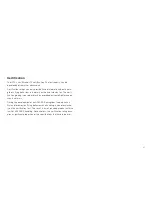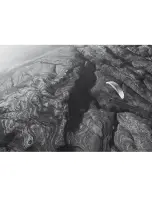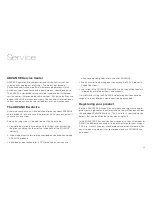
half wrap of the brakes is recommended to fly fullstalls .
To recover, the canopy has to be pre-inflated . To do this the brakes
should, at first, be released slowly and symmetrically, and only fully re-
leased when pre-inflation is complete . The IOTA 2 then flies away rela-
tively cleanly, without shooting forward too much .
Tip:
as a basic principle you should immediately and fully release
both brakes in all out-of-control situations, then be prepared to
control the resulting surge carefully .
Deep stall
Stable parachutal stall cannot be established, whether attempted by
brake or B-stall .In rain, or if the canopy is wet, the IOTA 2, like all para-
gliders, is more vulnerable to parachutal stall . If the wet glider were to
go into parachutal stall you should recover only by accelerating using
the speedbar . See also section «Flying with a wet paraglider» .
Landing
Always make a proper landing circuit with a well-planned final ap-
proach . As the ground approaches progressively increase brake to le-
vel the flight-path, before applying full brake to completely arrest the
forward speed .
Caution:
Steep turn reversals lead to strong swinging of the pi-
lot, and should not be done near the ground .
Caution:
Braking will reduce your speed and increase your sink,
but it will certainly seriously restrict your ability to manoeuvre .
Caution:
Getting below minimum speed leads to stalling: this
should unquestionably be avoided when top landing, and on fi-
nal approach .
Handle
with care: Never let your glider fall to the ground on its
leading edge . The overpressure so caused inside the wing can
rip the cell walls and damage the leading edge .
Handle
with care:
After landing in water the canopy can quick-
ly fill up, and become very heavy . The canopy should be lifted
out of the water by its trailing edge, giving the water a chance to
run out . Otherwise it might tear under this unaccustomed hea-
vy load .
Flying with a wet paraglider (risk of deep stall)
Flying with a wet glider creates a risk of deep stall . Deep stall is of-
ten the result of a combination of factors . The weight of the wet can-
opy goes up, and this increased weight increases the angle of attack,
which always puts the glider nearer the deep stall limit . Added to this,
24
Summary of Contents for IOTA2
Page 1: ...Edition 1 12_2017 Manual...
Page 2: ......
Page 14: ...14...
Page 26: ...26...
Page 27: ...27...
Page 28: ...28...
Page 34: ...parts and dispose of the lines canopy and risers in a waste incinera tion plant 34...
Page 38: ...38...
Page 41: ...Wing parts Winglet Upper surface Cleaning velcro Ribs Lower surface Air inlets Cells 41...
Page 44: ...Bowline 44...

